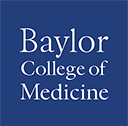Cadaver Musculoskeletal Anatomy EMG/MSKUS Guided Injections, Dystonia and Spasticity
Needs Statement
Spasticity is a significant problem after TBI/stroke/spinal cord injury (SCI) and other UMN syndromes. Urban et. al. predicted spasticity after ischemic stroke was present in 42.6% of patients. Adams and Hicks describe 65-78% of patients with chronic SCI has symptoms of spasticity. Hibbard et.al. described 23.4 % of patients with traumatic brain injury have spasticity. Education and training specialists in all the treatment options of spasticity including therapy, medications, injection with botulinum toxins, and baclofen pumps is imperative in restoration of the individual back to health, function, and potentially employment.
Target Audience
This activity is intended for physical medicine and rehabilitation residents, fellows, faculty, and private practice physiatrists.
Learning Objectives
At the conclusion of the conference, participants should be able to:
- Describe the musculoskeletal anatomy of the neck, arm and leg as it relates to limb spasticity injection.
- Compare two types of guided injections that can be used for spasticity/dystonia.
- Discuss suspension and injection strategies for botulinum toxin.
- Demonstrate how to inject at least two of the 8 new muscles FDA approved for spasticity injection.
- Describe pain management of spasticity.
Educational Methods
Lecture ▪ Hands-on Workshop ▪ Question & Answer
Evaluation
Evaluation by questionnaire will address program content, presentation, and possible bias.
Part I: March 7, 2024 Thursday: CME = 4.5 hours (in person and virtual McNair conference room)
7:00 AM Overview with breakfast – Moderator : Dr. Faye Tan
7:15 AM Botulinum toxin, yesterday, today, tomorrow – Dr. Joseph Jankovic (by Zoom)
8:15 AM MSK anatomy of the neck/arm – Dr. Han Zhang
9:00 AM MSK anatomy of the leg – Dr. Han Zhang
9:45 AM Break
10:00 AM MSKUS anatomy/injection strategies of the arm/neck – Dr. Jeff Strakowski
11:00 AM MSKUS anatomy/injection strategies of the leg – Dr. Jeff Strakowski
12:00 AM Lunch box and adjourn
Part II: March 8, 2024 Friday : CME = 1.00 hour (virtual by Zoom only)
8:00 AM Injection strategies for 8 new muscles & torsional anatomy updates – Dr. Faye Tan (Virtual by Zoom)
Part III: March 9, 2024 Saturday : CME = 4.0 hours per learner (in person UT cadaver lab)
7:30 AM Breakfast
8 AM to 12 Noon
Cadaver lab: (rotate to each station, pick 4)
Station 1: Prosectional anatomy of the cadaver neck/arm/leg – Dr. Han Zhang
Station 2: Guided injections neck / arm / leg – Dr. Jeff Strakowski
Station 3: Dr. Faye Tan
MSKUS guided injection practice on phantoms– 8 new muscles
Resuspension of toxin/spasticity injection of anatomic models
Station 4: Practice using ultrasound machines—Dr. YH Lee
Station 5: Mastering ultrasound injection techniques – Dr. Angela Cortez
Thursday, March 7, 2024
McNair Conf. A&B,
7200 Cambridge Street,
Houston, TX 77030
Friday Mar 8, 2024
Virtual Zoom
Saturday, March 9, 2024:
UT Health Medical School, Cadaver lab
6431 Fannin St., Rm B230
Houston, TX 77030
Key Note Speakers:
Joseph Jankovic, MD—Professor Neurology, Baylor Coll Med.
Jeffrey A. Strakowski, MD— Professor, PMR, The Ohio State University, Associate Director Medical Education, PMR, Ohio Health Riverside Methodist Hospital
_____________________________________
Han Zhang, MD— Professor, Department of Neurobiology and Anatomy, UTHealth, Houston, TX,
Angela Cortez, MD, Asst. Professor PMR, Baylor College of Medicine, McNair Campus, Houston, Texas
Yonghoon Lee, MD, Asst. Professor PMR, Baylor College of Medicine, McNair Campus, Houston, Texas
Course Director:
Faye Chiou Tan, MD— Professor, PMR, Baylor College of Medicine, Chief PMR, Dir EDX, Harris Health System, Houston, Texas
Baylor College of Medicine is accredited by the Accreditation Council for Continuing Medical Education (ACCME) to provide continuing medical education for physicians.
Baylor College of Medicine designates this live activity for a maximum of 9.50 AMA PRA Category 1 Credits™. Physicians should claim only the credit commensurate with the extent of their participation in the activity.
Available Credit
- 9.50 AMA PRA Category 1 Credit™
- 9.50 Attendance

 Facebook
Facebook X
X LinkedIn
LinkedIn Forward
Forward